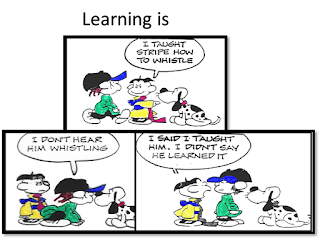The Beginning- Setting the Stage
This is my first blog as The Learning Teacher!
Well Begun is Half Done! This principle that I learnt during my Teacher Education has always worked wonderfully for me!
I have been always curious about, how to start my session, what exciting activity should I plan for the beginning to make it attractive and interesting for my students and participants? I suppose many teachers have the same question when they start planning for their session. So, I have penned down seven ways this can be done easily.
Let us understand the story behind the beginning! The beginning has to be planned effectively to ensure smooth journey of the entire session. The skill that is needed to effectively plan any session is called as SET INDUCTION- that means setting the tone or stage. The participants are inducted with what exactly will be there in the session.
For effective planning of Set Induction, let us consider the following which has helped me.
The Purpose:
The question of existence 😃First of all why we are here? What is the purpose of the topic? Why the participants would be interested in learning the topic? What is the importance of the topic? It is also called as 4P session.
In this what is the purpose? The main purpose of the workshop can be discussed like innovative pedagogies/ research based pedagogical What are the expectations of the students/participants? (Can be taken in a post-it and stick on the walls/windows of the classroom. This can be crossed out at the end of the workshop if the expectations are met). some of the expectations can be read aloud and discussed.
All these questions can be addressed by various activities like stories, games, and activities that will involve the participants. The purpose has to be very clear to the teacher/presenter and the participants. Sometimes the presenter likes to state the agenda in the beginning only, however I like the element of surprise! So, I reveal the topic when it is the right time:)
Readiness to learn:
You can take the horse to the water but cannot make the horse drink water! Unless the horse is thirsty:) Yes, understanding what would make our participants thirsty to learn is very important. It is also one of the principles described by Thorndike. Motivation is the main drive for learning.
The Context: What is the context of the topic which you will be discussing? This is one of the most important questions to be asked. A striking need-based context can be a good way of introducing a topic. Also, it has to be a local context which can act as a good hook!
Know Thy Participants: Understanding the participants need is also a crucial step in the planning, knowing about the participants educational and social background is also essential. It helps in building a rapport with participants. Also giving them a feeling that they are very important. For example, we usually ask the participants to write their name and one superpower and one kryptonite (other than academics) on a sheet of paper, crush/crumble it and throw it across. Other team member would receive it and introduce the participants. This also instills the peer-to-peer interactions.
The Maxim of Teaching: Known to unknown/Simple to Complex/Concrete to Abstract- Following these maxims or principles of teaching can help a lot to decide the examples that can be used. It will help to keep the participants in align to your topic and also follow the psychological path.
Set Induction will have:
Of course, you can begin by asking questions on previous knowledge! This is what most of the teachers do! However, I would encourage to try to do something different. Here is the chance to excite the students and get them ready to learn. If you really want to experiment any new or innovative idea, this is the place that you should do in your session!
A story based on historical evidence, just like The Dangerous Ratio || English || Shanti Pise - YouTube
A narration of a scenario/ incident, Drama, game, puzzle, quiz ...
It can be as creative as you would like to make it!
Just keep in mind that it should be related to your core topic.
Set Induction Time:
There is no specific ideal time for a set induction. It totally depends upon your topic and your position of the session. If you are in your first class, it will take more time to do the set induction. if you are in middle of your topic and want to resume the topic then the time would be less. If you want to introduce with a quiz or a game! think about the time and place.
Ideally 5%-10% of your total time of session could be devoted to set induction.
Resources:
Plan, collect and keep the resources needed for the set induction. There could be lot of icebreaking activities that could be planned according to the topics. 53 Ice Breaker Games [That Your Team Won’t Find Cheesy] | SessionLab
Do's and Don'ts during Set Induction
1. Introduction should be exciting and based on previous knowledge.
2. Avoid using complex terms in the beginning.
3. Try to gain the confidence of your students/participants first.
4. Plan the activities in advance!
5. Avoid panic if something doesn't work properly.
6. Remember! you know your class well, so plan the set inductions accordingly.
I hope these pointers would help you to plan your introductions more effectively!
There are many more things that could go into the planning of Set Induction. Let me know if you would like to share some of your examples. Or you would like me to explain some of the above points in detail.
I would be happy to answer your questions if any...




Very Knowledgeable...
ReplyDeleteThanks Nidhi, for sharing your feedback:)
ReplyDelete